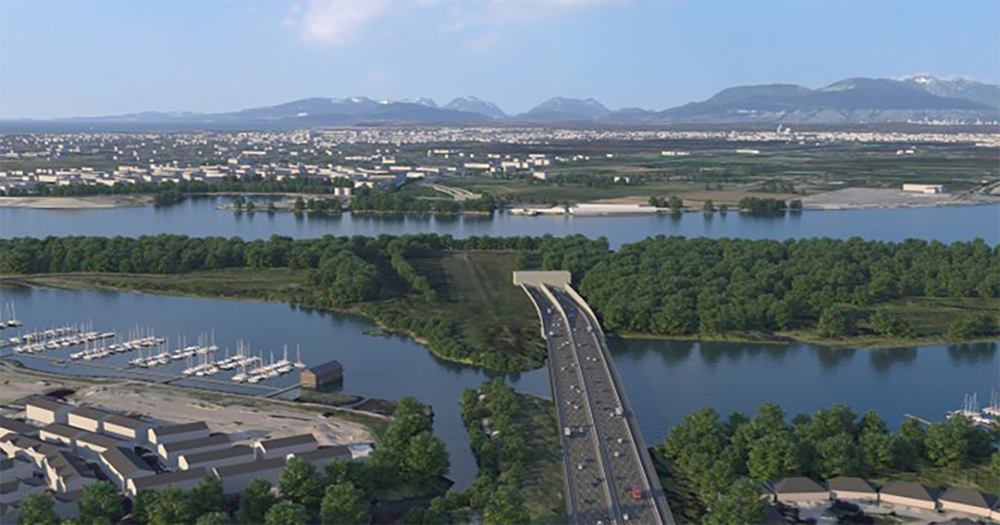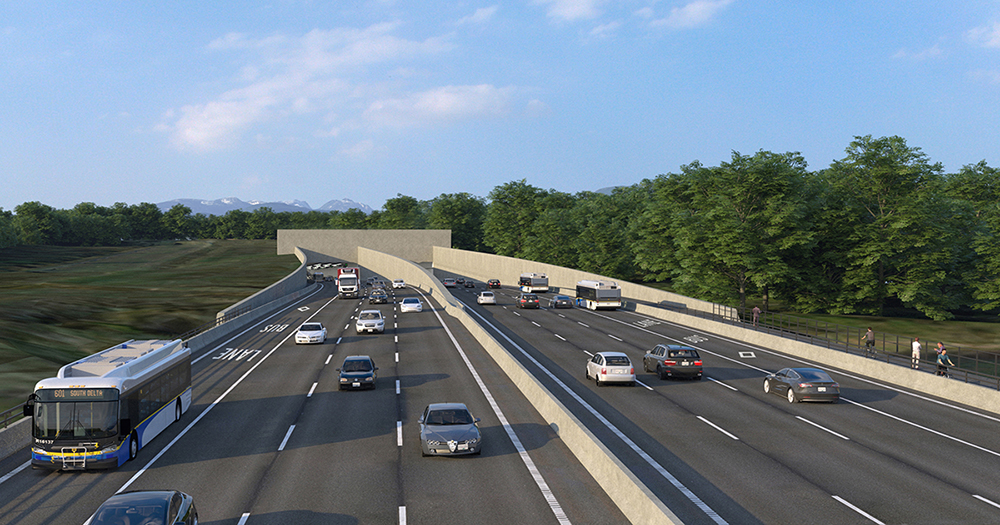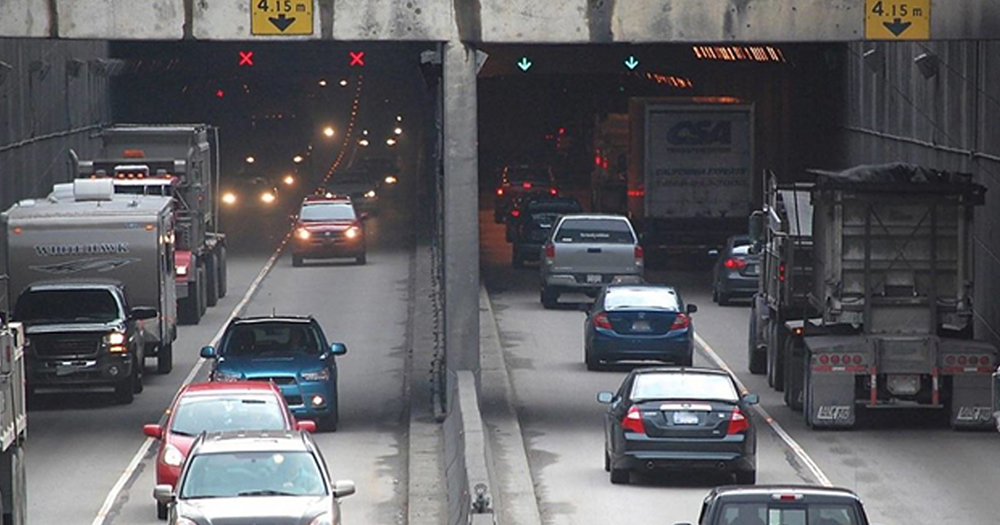
Cowi’s US$12 (CAN$15 million) contract, awarded by the province of British Columbia, is part of the larger $3.6 billion (CAN$4.15 billion) river crossing project that will provide more capacity for drivers and transit users, while allowing walking and cycling options through a Fraser River crossing for the first time.
As the immersed tunnel specialist, Cowi will be part of the broader owner's engineering team that will bring together experts from highway and civil, environmental, hydraulics, communication, marine navigation and construction sectors – as well as archaeology - to overcome what the company says will be “unprecedented engineering challenges”. Opening is scheduled for 2030.

In each direction the new tunnel will have three general-purpose traffic lanes and one dedicated bus lane, as well as a bi-directional multi-use cycle path and pedestrian walkway to improve travel across the river without restricting navigable space for marine traffic. Cowi will provide the reference concepts and geotechnical underpinning for the overall project. Cowi said that it will also draw on its international expertise from its offices around the world to create what the company says will be “pioneering” flood control systems around the new tunnel that can withstand extreme river flows as well as anticipated increased sea levels.
A statement from Cowi said that it was chosen because of its work around the world on some of the most iconic tunnels, including the world’s longest immersed tunnel as part of the Hong Kong-Zhuhai-Macao link, the first immersed tunnel designed against typhoon waves in South Korea (see box). Cowi noted that it “has also previously helped create pioneering tunnel concepts for an immersed tunnel in the centre of Stockholm where the water depth to an existing utility pipe near the tunnel alignment required casting of the tunnel elements onsite under floating conditions”.
Construction of the existing 629m-long four-lane tunnel - inspired by construction of the Maastunnel in Rotterdam, Netherlands - began in 1957 and was opened to traffic in 1959, then called the Deas Island Tunnel. It was the first project in North America to use immersed tube technology, and remains Canada’s only tunnel below sea level and now carries more than its design limit of 80,000 vehicles a day. Extensive renovations to the tunnel and attempts to improve access roads have been done over the years, but the structure has only about 10 years of useful life, according to some reports.
An earlier replacement proposal – a 3km-long 10-lane cable-stayed bridge costing US$2.8 billion - was underway in 2015. The provincial British Columbia government was saying that construction was on target to start in 2017 for completion in 2022. Procurement had started and three consortia were being considered.
One consortium was headed by Spanish company ACS and its local subsidiaries and included Star America Infrastructure Partners and Aecon. Another of the competing consortia comprised was Kiewit, Macquarie and Vinci. The third was made up of Fluor, John Laing and SNC-Lavalin.
However, a provincial election in 2017 saw a change of government which promptly scrapped the project in favour of more research and consultation with the mayors of the greater Vancouver area cities and municipalities. In October 2019 the mayors recommended an eight-lane tunnel as the replacement.

When the initial bridge project was cancelled, local media reported that the province would pay $1.65 million to two of the three shortlisted consortia which had already submitted bids.
For the just-announced replacement tunnel, two options were presented in the business case that the government received last December – an eight-lane tunnel and eight-lane suspension bridge. Both options were given serious consideration, noted the government.
The tunnel was chosen as the best option for several reasons. A tunnel limits noise because it is below water and with a tunnel there is no visual impact to the surrounding communities, as there would be with a bridge. Also, a tunnel has little impact on nearby agricultural land and does not introduce new navigational restrictions for the Fraser River.
Other contracts, worth in total just over $33.4 (CAN$41 million) have been signed for the project. These include $12 million (CAN$15 million) to R.F. Binnie and Associates as the owner’s engineer for highway and civil works. Gloder Associates won a deal worth $13.45 million (CAN$16.8 million) for environmental and archaeological services.
The next step is to initiate the environmental assessment process, including ongoing engagement with indigenous groups and stakeholders and preparation for procurement.
Cowi also announced, in March, that it has opened an office in the central Canadian city of Toronto, “close to COWI’s clients and partners”. Cowi said it has brought in its tunnels expert Gianpaolo Busacchi, associate project director for tunnels, to Toronto from Cowi’s offices in Doha, Qatar. The group wants to position itself as one of the top players in the tunneling consulting industry in Canada. Cowi already has offices in Vancouver and on the east coast in Halifax, in the province of Nova Scotia.
Cowi in China
The Hong Kong-Zhuhai-Macao link, which opened in late 2018, includes the world's longest immersed tunnel for road traffic, which for Chinese contractors was designed using an innovative watertight concrete structure developed by Cowi's tunnel experts.
The 55km-long Hong Kong-Zhuhai-Macao Bridge connects Hong Kong with Macao and Zhuhai on the Chinese mainland via three cable-stayed bridges and an undersea tunnel between two artificial islands. The includes two bores with three lanes in each direction and a service gallery in between. The mega-project has reduced journeys from Hong Kong to Zhuhai and Macao by road from four hours to just 45 minutes. The deepest foundation is 44m below sea level. More than 30 tunnel elements were built and installed, with each measuring up to 180m x 38m x 11m and weighing 72,000tonnes. The design approach was similar to what was implemented on the Øresund Tunnel connecting Denmark and Sweden and the Busan-Geoje fixed link tunnel in South Korea.
Construction start 2026
The BC Ministry of Transport and Infrastructure told World Highways that six sections of the tunnel will be fabricated in a casting facility. They will be individually floated into position on the river and immersed into a dredged trench. Environmental considerations will be thoroughly assessed as part of the Environmental Assessment process which commenced this spring. Including the procurement and environmental assessment, it is anticipated that construction will begin in 2026 with the tunnel opening in 2030.
To improve travel time and reliability to and from the new tunnel, a new nearby Steveston Interchange will be constructed to replace the old layout at a cost of $69.8 million (CAN$87.5 million). Construction begins later this year, with completion in 2025.
The new tunnel will be upstream of the existing tunnel, but the exact distance has yet to be determined. It will be an eight-lane structure and include a dedicated tube for pedestrians and cyclists; the existing tunnel does not accommodate pedestrians and cyclists. The overall structure will consist of six tunnel elements, each around 110m long, 45m wide and 10m high. Design life will be 150 years.
When it is opened, the old tunnel will be closed and demolished. It is expected that the tunnel elements will be removed by reversing the immersion process that was used to build the structure. The government said that the only immersed tube-tunnel removal that it is aware of was that of the 1.25km-long Baytown Tunnel under the Houston Ship Channel in Texas.
The Baytown Tunnel, with a diameter of 11m, was opened in 1953 but closed in 1995 with the opening of the Fred Hartman Bridge. It was demolished in 1997 in order for the US Army Corps of Engineers to deepen the channel in 1998. The tunnel segments were dug up and much was used as paving aggregate. Removal of the tunnel was done by Jenny Engineering, which was acquired by Cowi in 2013 and is now part of the group’s global tunnel expertise.







